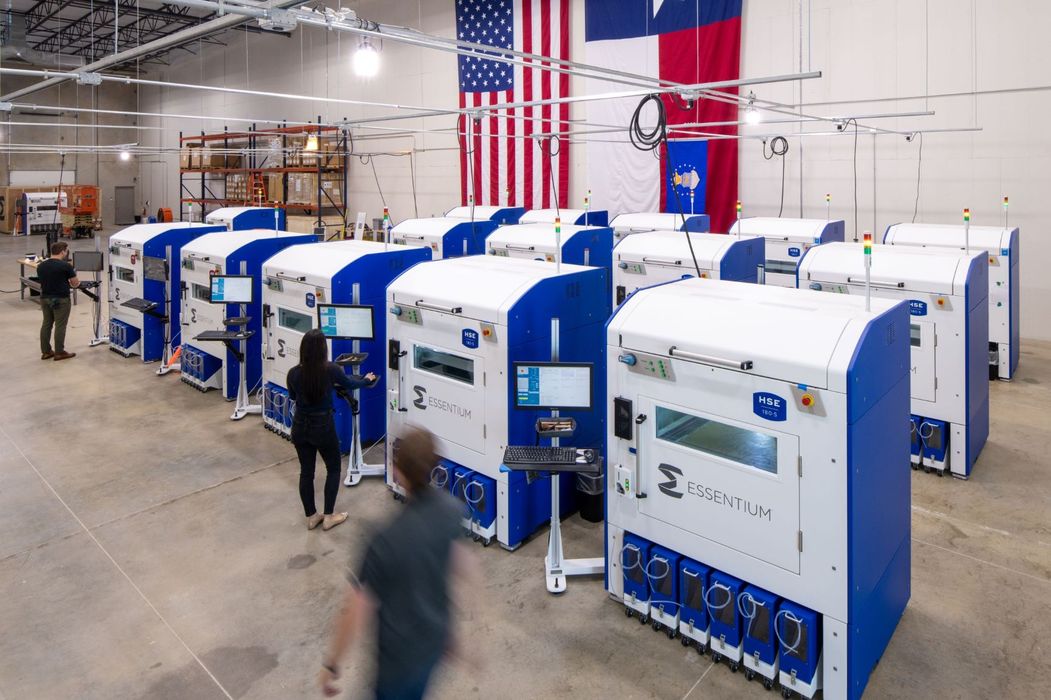
Essentium launched a 3D printed parts-on-demand service.
The new service, called “Essentium Parts On Demand”, or “EPOD” is now available to industry for the production of quantities of 3D printed parts.
Essentium said the new service operates nine HSE Essentium industrial 3D printers behind the scenes, and provides the ability to 3D print in a variety of engineering materials. This includes the popular high temperature material, PEEK.
Essentium is well-known for their high print speeds, which are indicated in the machine name: “HS” stands for “high speed”. The higher print speed means the nine devices can produce far more parts than might be expected with slower 3D printers, perhaps by several multiples.
Essentium plans to grow their EPOD farm to at least 15 printers in the near future, meaning they will have a considerable capacity to produce industrial parts on demand.
You might wonder why a company like Essentium, a manufacturer of 3D printers, would set up a print service rather than selling printers directly to clients. In fact, they are continuing to sell 3D printers, but the new service is targeted elsewhere.
It all boils down to cost. There are plenty of companies that want 3D printed parts, but don’t have the part volume, budget or skills to acquire and operate their own 3D printers. It’s those companies that this service is targeting.
EPOD allows clients to gain the benefits of Essentium tech without having to pay for the setup costs of their own equipment, which include not only hardware, but also staff training — and maybe even hiring skilled staff.
Essentium explains:
“The prospect of an economic downturn makes companies more cautious about overextending themselves as they face potential revenue declines. However, while CFOs are rethinking capital expenditure, demand for parts continues to rise. The EPOD service offers customers the benefits of HSE printing and access to Essentium’s entire ecosystem without increasing capital expenditure. With EPOD, customers can use Essentium’s engineering-grade filaments and employ EPOD’s “polymer-to-part” services to make parts from custom filaments formulated and made in-house.”
It’s also a way for companies to “test” Essentium parts before buying their own equipment. Many companies start with a small part as an experiment, but then quickly discover the benefits of 3D printing and grow their usage. Eventually they may have enough part volume to justify acquiring their own equipment.
That’s one effect I’m pretty sure Essentium is counting on with the launch of EPOD.
It seems that 3D print services are going to form a key part of the industrial economy going forward, and now Essentium has taken a spot at that table.
Via Essentium
